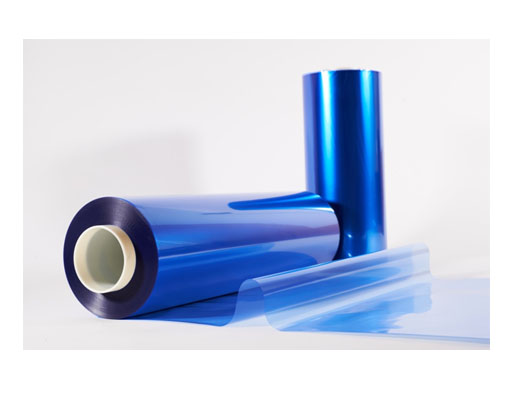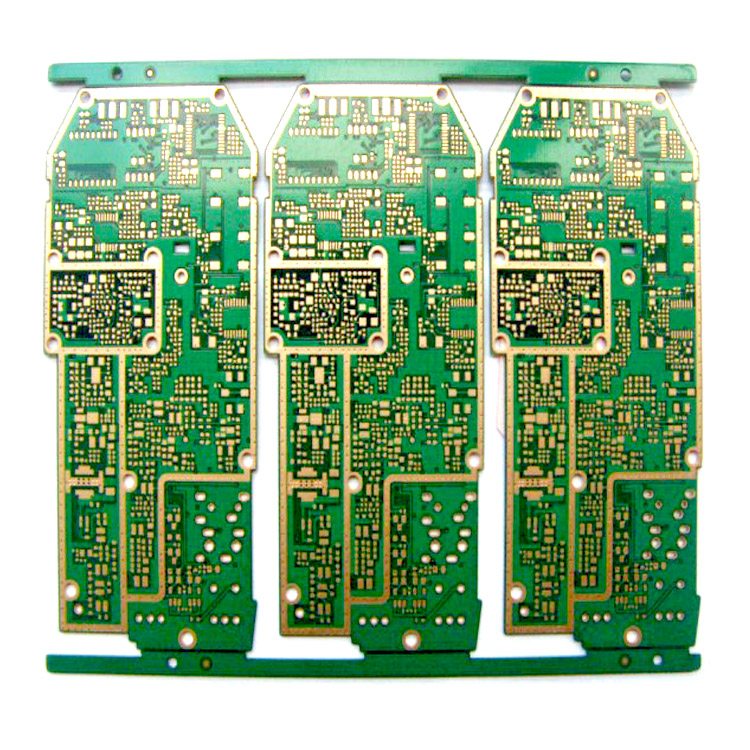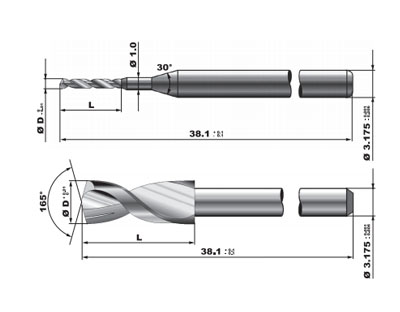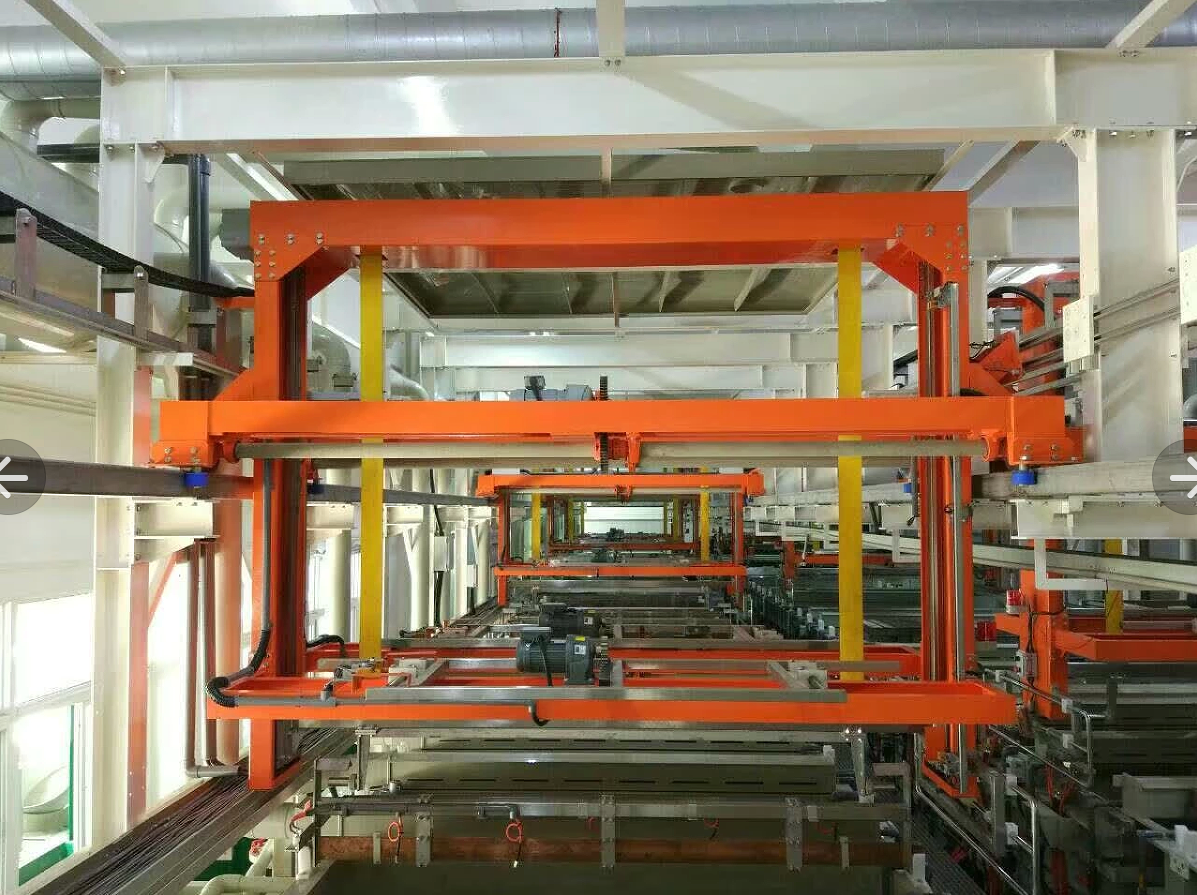The main manufacturing difficulties of high-level circuit board, such as interlayer alignment, inner circuit manufacturing, crimping manufacturing, drilling manufacturing and so on.Aiming at the main manufacturing difficulties, this paper introduces the key production control points of key processes such as interlayer alignment control, laminated structure design, inner circuit process, lamination process and drilling process, which can be used as a reference for peers.
High level circuit boards are generally defined as high-level multi-layer circuit boards with 10 ~ 20 layers or more, which are more difficult to process than traditional multi-layer circuit boards, and have high quality and reliability requirements. They are mainly used in communication equipment, high-end servers, medical electronics, aviation, industrial control, military and other fields.In recent years, the market demand for high-level boards in the fields of application communication, base station, aviation and military is still strong. With the rapid development of China’s telecom equipment market, the market prospect of high-level boards is promising.
At present, PCB manufacturers that can mass produce high-level circuit boards in China are mainly from foreign-funded enterprises or a few domestic enterprises.The production of high-level circuit boards requires not only higher technology and equipment investment, but also the experience accumulation of technicians and production personnel. At the same time, the customer certification procedures for importing high-level circuit boards are strict and cumbersome. Therefore, the threshold for high-level circuit boards to enter the enterprise is high and the industrialization production cycle is long.The average number of PCB layers has become an important technical index to measure the technical level and product structure of PCB enterprises.This paper briefly describes the main processing difficulties encountered in the production of high-level circuit boards, and introduces the key control points of key production processes of high-level circuit boards for reference and reference.
1、 Main production difficulties
Compared with the characteristics of conventional circuit boards, high-level circuit boards have the characteristics of thicker boards, more layers, denser lines and vias, larger unit size, thinner dielectric layers, and stricter requirements for inner space, interlayer alignment, impedance control and reliability.
1.1 Difficulty of interlayer alignment
Due to the large number of high-level board layers, the customer’s design end has increasingly strict requirements on the alignment of PCB layers, and the alignment tolerance between layers is usually controlled to ± 75μm. Considering the large unit size design of high-level board, the ambient temperature and humidity of graphics transfer workshop, the dislocation superposition and interlayer positioning mode caused by the inconsistent expansion and contraction of different core board layers, it is more difficult to control the interlayer alignment of high-level board.
1.2 Difficulties in making inner circuit
The high-level board adopts special materials such as high Tg, high speed, high frequency, thick copper and thin dielectric layer, which puts forward high requirements for the fabrication and graphic size control of the inner circuit, such as the integrity of impedance signal transmission, which increases the difficulty of the fabrication of the inner circuit.The line width and line spacing are small, the open and short circuits increase, the micro short increases, and the qualification rate is low;There are many signal layers of fine lines, and the probability of missing AOI detection in the inner layer increases;The inner core plate is thin, easy to fold, resulting in poor exposure, and it is easy to roll after etching;Most of the high-level boards are system boards with large unit size, and the cost of scrapping the finished products is relatively high.
1.3 lamination manufacturing difficulties
When multiple inner core plates and semi cured sheets are superimposed, defects such as sliding plate, delamination, resin cavity and bubble residue are easy to occur in crimping production.When designing the laminated structure, it is necessary to fully consider the heat resistance, voltage resistance, glue filling amount and medium thickness of the material, and set a reasonable high-level plate lamination program.There are many layers, and the control of expansion and contraction and the compensation of size coefficient cannot be consistent;The interlayer insulation layer is thin, which is easy to lead to the failure of interlayer reliability test.Fig. 1 is a diagram of the defect of bursting plate delamination after thermal stress test.

1.4 Drilling difficulties
The use of high Tg, high speed, high frequency and thick copper special plates increases the difficulty of drilling roughness, drilling burr and drilling dirt removal.There are many layers, the total copper thickness and plate thickness are accumulated, and the drilling tool is easy to break;Caf failure caused by dense BGA and narrow hole wall spacing;Due to the plate thickness, it is easy to cause the problem of oblique drilling.
2、Key production process control
2.1 Material selection
With the development of electronic components in the direction of high-performance and multi-function, it also brings high-frequency and high-speed signal transmission. Therefore, it is required that the dielectric constant and dielectric loss of electronic circuit materials are relatively low, as well as low CTE, low water absorption and better high-performance copper clad laminate materials, so as to meet the processing and reliability requirements of high-level boards.Common plate suppliers mainly include a series, B series, C series and D series. See Table 1 for the comparison of the main characteristics of these four inner substrates.For the high-level thick copper circuit board, the semi cured sheet with high resin content is selected. The glue flow amount of the inter layer semi cured sheet is enough to fill the inner layer graphics. If the insulating medium layer is too thick, the finished board is easy to be too thick. On the contrary, if the insulating medium layer is too thin, it is easy to cause quality problems such as medium stratification and high-voltage test failure. Therefore, the selection of insulating medium materials is very important.

2.2 Design of laminated structure
The main factors considered in the design of laminated structure are the heat resistance, voltage resistance, glue filling amount and dielectric layer thickness of the material, and the following main principles shall be followed.
(1)The manufacturer of semi cured sheet and core board must be consistent. In order to ensure the reliability of PCB, single 1080 or 106 semi cured sheet shall not be used for all layers of semi cured sheet (unless the customer has special requirements). When the customer has no medium thickness requirements, the medium thickness between layers must be guaranteed to be ≥ 0.09mm according to ipc-a-600g.
(2)When customers require high Tg board, core board and semi cured sheet shall use corresponding high Tg materials.
(3) for the inner substrate 3oz or above, semi cured sheets with high resin content shall be selected, such as 1080r / C65%, 1080hr / C68%, 106R / c73% and 106hr / C76%; however, the structural design of 106 high glue semi cured sheets shall be avoided as far as possible to prevent the superposition of multiple 106 semi cured sheets. Because the glass fiber yarn is too thin, the glass fiber yarn collapses in the large substrate area, affecting the dimensional stability and plate explosion stratification.
(4) If the customer has no special requirements, the thickness tolerance of interlayer dielectric layer is generally controlled by + / – 10%. For impedance plate, the dielectric thickness tolerance is controlled by ipc-4101 C / M tolerance. If the impedance influencing factor is related to the substrate thickness, the plate tolerance must also be controlled by ipc-4101c / m tolerance.
2.3 Interlayer alignment control
For the accuracy of inner core board size compensation and production size control, it is necessary to accurately compensate the graphic size of each layer of high-level board through the data and historical data experience collected in production for a certain time to ensure the consistency of tension and shrinkage of each layer of core board.Select high-precision and reliable interlayer positioning mode before lamination,For example, pin Lam, hot melt and rivet combination. Setting appropriate lamination process procedures and daily maintenance of the press are the key to ensure the lamination quality. Control the lamination glue and cooling effect and reduce the problem of interlayer dislocation. The interlayer alignment control needs to be comprehensively considered from the internal compensation value, lamination positioning mode, lamination process parameters, material characteristics and other factors.
2.4 Inner line process
Since the analytical capacity of the traditional exposure machine is about 50um, for the production of high-level plates, the laser direct imaging machine (LDI) can be introduced to improve the graphic analytical capacity, which can reach about 20um.The alignment accuracy of traditional exposure machine is ± 25μUm, the inter layer alignment accuracy is greater than 50μm。Using high-precision alignment exposure machine, the graphic alignment accuracy can be improved to about 15um, and the inter layer alignment accuracy can be controlled within 30um, which reduces the alignment deviation of traditional equipment and improves the inter layer alignment accuracy of high-level board.
In order to improve the line etching ability,The width and pad of the line need to be adjusted in the engineering design(or welding ring) in addition to giving appropriate compensation, it is also necessary to make more detailed design consideration for the compensation amount of special graphics, such as return line and independent line. Confirm whether the design compensation of inner line width, line distance, isolation ring size, independent line and hole to line distance is reasonable, otherwise change the engineering design. If there are impedance and inductive reactance design requirements, pay attention to whether the design compensation of independent line and impedance line is sufficient, the parameters shall be controlled during etching, and the batch production can be carried out only after the first piece is confirmed to be qualified.In order to reduce etching side corrosion, it is necessary to control the chemical composition of each group of etching solution within the best range.The traditional etching line equipment has insufficient etching capacity. The equipment can be technically transformed or imported into high-precision etching line equipment to improve the etching uniformity and reduce the problems such as rough edge and unclean etching.
2.5 Lamination process
At present, the interlayer positioning methods before lamination mainly include: pin Lam, hot melt, rivet, combination of hot melt and rivet, and different positioning methods are adopted for different product structures. For high-level plates, pin Lam is adopted, or fusion + riveting is used. QPE punching machine punches positioning holes, and the punching accuracy is controlled within ± 25μm。During fusion, X-ray shall be used to check the layer deviation of the first plate made by the adjusting machine, and the batch can be made only after the layer deviation is qualified. During batch production, it is necessary to check whether each plate is melted into the unit to prevent subsequent delamination. The lamination equipment adopts high-performance supporting press to meet the inter layer alignment accuracy and reliability of high-level plates.
According to the laminated structure of high-level board and the materials used, study the appropriate lamination procedure, set the best temperature rise rate and curve, appropriately reduce the temperature rise rate of pressed board in the conventional multi-layer circuit board lamination procedure, prolong the high-temperature curing time, make the resin fully flow and solidify, and avoid the problems such as sliding plate and interlayer dislocation in the lamination process.Plates with different TG values cannot be the same as grate plates;Plates with ordinary parameters cannot be mixed with plates with special parameters;To ensure the rationality of the tension shrinkage coefficient, the properties of different plates and semi cured sheets are different, so the corresponding plate semi cured sheet parameters need to be used for compression, and the process parameters need to be verified for special materials that have never been used.
2.6 Drilling technology
Due to the superposition of each layer, the plate and copper layer are too thick, the drill bit is seriously worn, the drill knife is easy to be broken, and the number of dry holes, falling speed and rotating speed are appropriately reduced.Accurately measure the expansion and contraction of the plate to provide accurate coefficient;If the number of layers ≥ 14, the hole diameter ≤ 0.2mm or the distance from hole to line ≤ 0.175mm, the drilling rig with hole position accuracy ≤ 0.025mm shall be used for production;diameterφThe hole diameter above 4.0mm adopts step-by-step drilling, the thickness diameter ratio is 12 ∶ 1, and the production method of step-by-step drilling and positive and negative drilling is adopted;Control the burr and hole thickness of the drilling. The high-level slab shall be drilled with a new drill knife or a grinding drill knife as far as possible, and the hole thickness shall be controlled within 25um.In order to improve the drilling burr problem of high-level thick copper plate, through batch verification, the use of high-density backing plate, the number of laminated plates is one, and the grinding times of drill bit is controlled within 3 times, which can effectively improve the drilling burr, as shown in picture bellow:

For the high-level board used for high-frequency, high-speed and massive data transmission, back drilling technology is an effective method to improve signal integrity.The back drilling mainly controls the residual stub length, the hole position consistency of the two boreholes and the copper wire in the hole.Not all drilling machine equipment has back drilling function,The drilling machine equipment must be technically upgraded (with back drilling function), or the drilling machine with back drilling function must be purchased. The back drilling technology applied from the relevant industry literature and mature mass production mainly includes: traditional depth control back drilling method, back drilling with signal feedback layer in the inner layer, and back drilling with depth calculated according to the example of plate thickness ratio, which will not be repeated here.
3、Reliability test
The high-level plate is generally a system plate, which is thicker and heavier than the conventional multi-layer plate, has larger unit size, and the corresponding heat capacity is also larger. During welding, more heat is required and the welding high temperature time is long.At 217 ℃ (melting point of tin silver copper solder), it takes 50 seconds to 90 seconds.
4、Conclusion
The research literature on high-level circuit board processing technology is relatively few in the industry.This paper introduces the key process control points of key production processes such as material selection, laminated structure design, interlayer alignment, inner circuit fabrication, lamination process and drilling process, so as to provide peer reference and understanding, and hope more peers to participate in the technical research and communication of high-level circuit boards.








 Nov. 17, 2021
Nov. 17, 2021 





